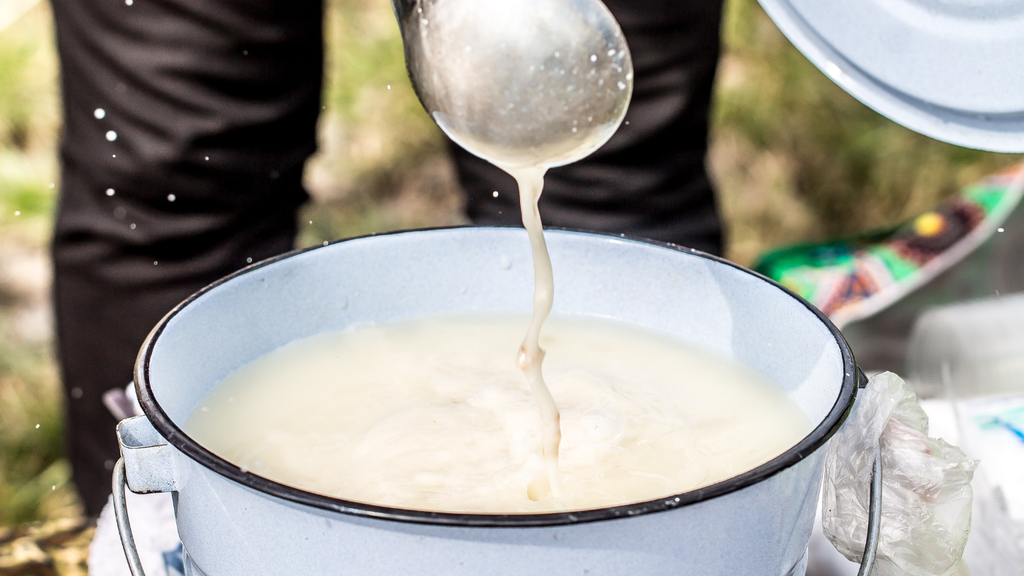For centuries, traditional societies thrived on milk straight from the source. It was never stripped, heated, or sterilized to oblivion—it was alive. In recent years, science has begun catching up to what ancestral cultures always knew: raw milk builds stronger bodies, sharper minds, and more resilient bones. At the heart of its power lies a remarkable protein called lactoferrin, which plays a direct role in bone formation and immune defense. When milk is pasteurized, this delicate compound is mostly destroyed—taking with it one of nature’s most potent growth factors. Let’s break down what makes raw milk such a foundational ancestral food.
The Secret Protein That Fuels Bone Growth

Raw milk contains a naturally occurring protein that modern science almost forgot: lactoferrin. Researchers have shown that lactoferrin stimulates bone-building cells while simultaneously suppressing bone-resorbing cells. That means it literally encourages new bone formation while slowing down breakdown. Pasteurization, the process used to “sterilize” commercial milk, destroys about two-thirds of this compound, leaving behind a product that is nutritionally inferior. The Masai, who drink raw milk daily, are a living testament to the strength and vitality that raw dairy can support.
Lactoferrin: A Natural Bone-Building Factor

Lactoferrin’s effect on bones was first confirmed in medical research showing its ability to trigger osteoblast activity—the creation of new bone tissue. It also suppresses osteoclasts, the cells that degrade bone. The more heat you apply to milk, the less lactoferrin survives. By 75°C (the temperature used in standard pasteurization), much of it is gone. It’s a perfect example of how industrial processing erases the life force in real food.
For people seeking to support skeletal strength naturally, raw milk provides the bioactive nutrition your body recognizes. Instead of relying on synthetic calcium supplements, nature offers a complete package of minerals, fat-soluble vitamins, and proteins that work synergistically to build strong, flexible bones.
Real Strength vs. Processed Weakness

You’ve probably seen the meme: the hulking “average raw-milk enjoyer” standing next to the frail figure of a pasteurized-milk believer. While tongue-in-cheek, the comparison isn’t entirely off base. Raw milk is rich in nutrients that fuel muscle growth and repair—bioavailable amino acids, cholesterol for hormone synthesis, and minerals like zinc and magnesium. Pasteurized milk, on the other hand, is a shadow of its former self, lacking enzymes, beneficial bacteria, and heat-sensitive proteins like lactoferrin.
What’s left after pasteurization is a drink that’s harder to digest and less nourishing. The difference isn’t just cultural—it’s biochemical.
Tall Tales and Taller People

Regions historically dependent on raw dairy, such as Northern Europe, consistently show taller populations. Anthropologists have long noted that Northern Europeans—whose ancestors relied on raw milk and cheese—outpace global averages in height. While genetics play a role, nutrition clearly matters. Lactoferrin and other growth-promoting compounds in raw milk could be part of this story, alongside abundant vitamin D, calcium, and animal fat intake.
This link between traditional dairy consumption and stature has been observed in both historical and modern data. Where raw dairy consumption persisted, populations maintained exceptional bone density and skeletal development.
The Raw Milk Warriors of the Steppe

Across Central Asia, warrior cultures like the Kyrgyz and Mongols have relied on raw and fermented milk for millennia. These nomadic tribes didn’t just survive—they dominated the harshest terrains on earth. Try telling them raw milk is dangerous. Their fermented mare’s milk (kumis) provided hydration, probiotics, and a steady source of fat and protein during long migrations.
Fermented raw milk products remain staples in regions where refrigeration is limited but human health thrives. The living enzymes and bacteria in these foods sustain strong immune systems and nutrient absorption, even in extreme conditions.
When Pasteurization Meets Malnutrition

In contrast, many modern populations consuming pasteurized dairy—or none at all—struggle with shorter stature and weaker bones. Countries with high rates of lactose intolerance and low raw dairy intake often show lower average heights. This is no coincidence. Without access to lactoferrin and live enzymes, calcium absorption decreases, and skeletal growth may be limited.
Industrial processing has made milk shelf-stable, but in the process, it has stripped away its living essence. The human body was designed to interact with food in its whole, unaltered form.
Raw Milk: Nature’s Multivitamin

Raw milk is more than a drink—it’s a complete food. It supports immunity with zinc, retinol, and vitamin D3; aids hormone production with cholesterol and magnesium; nourishes the thyroid with iodine; and builds muscle through its highly bioavailable protein. It even assists detoxification with minerals like magnesium and zinc, and provides antioxidants including vitamins C, E, and A in their natural forms.
Every element in raw milk works in concert, just as nature intended. When you heat, homogenize, and industrialize this food, you don’t make it safer—you make it incomplete.
The Return to Real Food

Raw milk isn’t a trend, it’s a return to human roots. It sustained warriors, herders, and farmers for thousands of years before refrigeration or mass marketing existed. Today, as more people seek ancestral nutrition, the evidence keeps mounting: foods closest to their natural state nourish best. Lactoferrin may be just one of many lost treasures in our modern diet, but rediscovering it means reclaiming the vitality our ancestors once took for granted.
References
- Naot, Dorit, Andrew Grey, Ian R. Reid, and Jillian Cornish. “Lactoferrin—A Novel Bone Growth Factor.” Clinical Medicine & Research, vol. 3, no. 2, 2005, pp. 93–101.
- Reid, Ian R., and Cornish, Jillian. “Lactoferrin: Molecular Structure, Cellular Function, and Role in Bone Metabolism.” Journal of Bone and Mineral Research, vol. 23, no. 12, 2008, pp. 1872–1881.
- Korhonen, Hannu, and Anna Pihlanto. “Bioactive Proteins and Peptides from Milk as Functional Foods.” Current Pharmaceutical Design, vol. 13, no. 8, 2007, pp. 829–843.
- Roginski, Helena, et al. Encyclopedia of Dairy Sciences. 2nd ed., Academic Press, 2011.
- World Health Organization. “Worldwide Prevalence of Lactose Intolerance.” Food and Agriculture Data Report, 2020.

